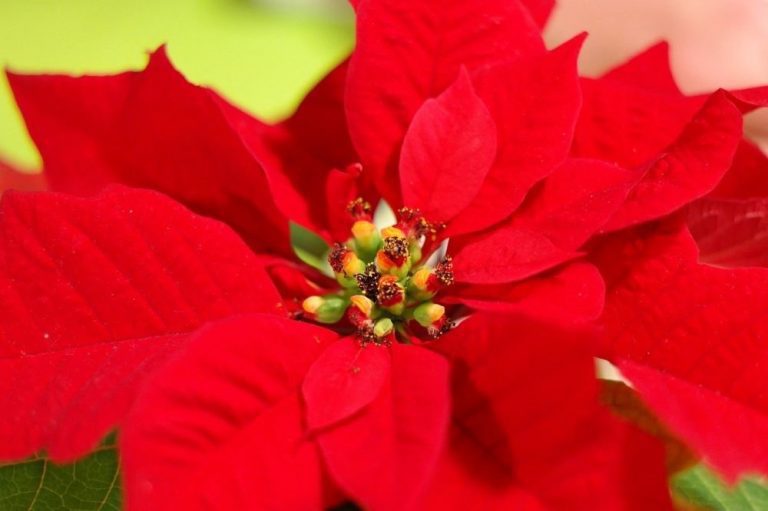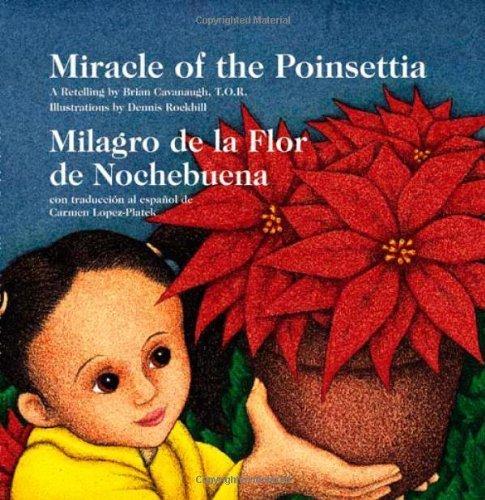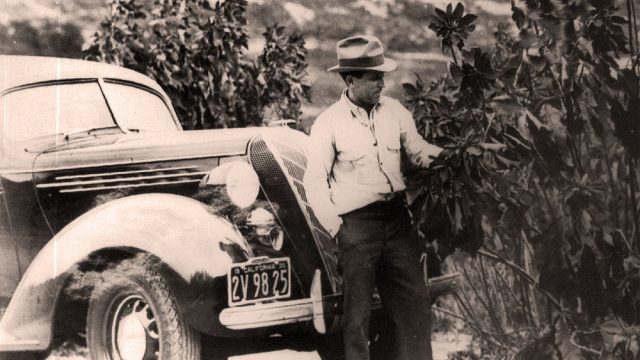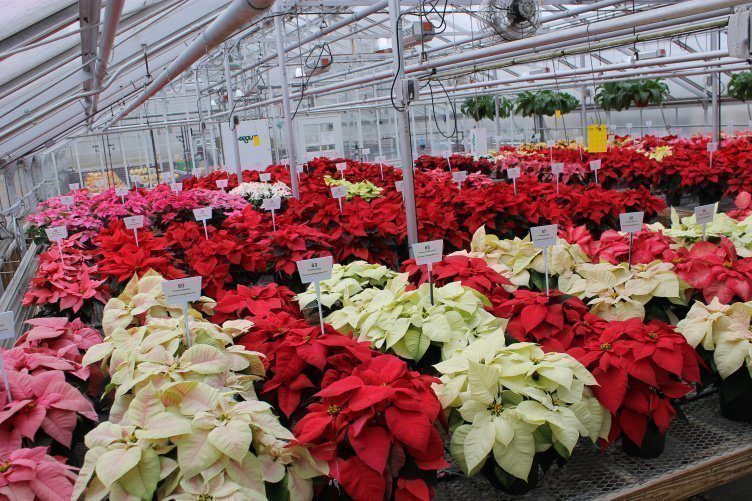Tips to Make Poinsettias Bring Holiday Cheer For Months
By Linda Lee

While our Christmas trees may be thrown to the sidewalk, the discarded symbols of celebration and goodwill toward all, poinsettias don’t have to go with them.
If you have chosen the poinsettia wisely, it has weeks, even months, of bloom ahead.
You can tell how long by looking at the actual flowers. Those are not the red bracts (or white, orange, speckled, whatever color you’ve chosen this year) on the plant. The flower is in the middle and looks a little like some hard berries or kernels. They have a little fringe at one end. When you buy the poinsettia those little berries should be green and just beginning to turn yellow. If they were already yellow when you bought it, the bracts might be dropping by now. Full yellow means the flower is in full bloom.
But a poinsettia has many flowers. Check a few. If they are still part green, you have weeks to go. Now, don’t mess it up! Think of the poinsettia as a little old lady who lives in Florida. She likes to sit by the window and in the sun. She doesn’t like drafts. She doesn’t like it to be too cold, so not too close to a cold window, and really don’t let her touch the window. But don’t put her too close to the radiator, either, or she will dry out.
Now, unlike the little old lady in Florida, water her only when the soil is dry, otherwise you’ll get root rot. Unless you are planning on keeping the plant long enough to put it out in the garden and have it rebloom for next year, you can discarded her before Easter.
There’s an interesting history to these holiday plants which we love because they last so long.
After all, what other plant is named for an ambassador, was revered by the Aztecs for its medicinal qualities, was grown by a man who in 1900 stopped in California while on his way to Fiji to start a vegetarian health spa, and became a Christmas sensation thanks to color television and Bob Hope specials?
Before we even start, a word.
The poinsettia is not poisonous. It may look fearsome, with all its bright, aggressive foliage and colorful bracts, the fact it blooms in the middle of winter, its “out of time” quality. But it won’t kill you. The white sap that comes out if you break a stem is latex. Some people are sensitive to latex. But that’s about it.
The history of this plant is also colorful. Ambassador Joel Roberts Poinsett was the first U.S. ambassador (or agent as he was called) to South America and became minister to Mexico in 1822. He was a physician, born in South Car While in southern Mexico he sent samples of this fascinating bush, which locals called “flor de nochebuena,” flower of Christmas Eve, back to the U.S. The Aztecs had used this plant, which they called Cuetlaxochitl, to decorate Montezuma’s palace. They used the sap to cure fever, and the red bracts to make dye.

The Noche Buena, the flower of Christmas Eve, is at the center of a Mexican legend about a little girl who brings a gift of weeds to church on Christmas Eve and places them on an altar, at the foot of a statue of the Christ child. A miracle turns the weeds into bright red flowers, the flor de Noche Buena.
Another boost for poinsettia was Paul Ecke. He was a German immigrant farmer who was, it is said, just passing through the United States in 1900. His ultimate destination was said to be Fiji, a tropical paradise where he planned to open a vegetarian spa. But two things stopped him: the climate of California, where he began a dairy farm and orchard and, eventually, the possibilities for this strange bush, which could grow taller than a man.

This is Paul Ecke on the Ecke ranch in the 1930s. For nearly a century the Ecke family grew the vast majority of poinsettias not only in the United States but in the world. First, it was cut flowers from these bushes, sometimes sold alongside Hollywood Boulevard. Ecke learned to graft the best plants, develop new varieties, and eventually tamed the poinsettia into a potted plant. Plants grown outdoors yielded to tightly controlled greenhouse-grown plants (and the vast ranch land yielded to lucrative real estate, along with a piece of property given away to Legoland).
What gave the poinsettia a kick in the pants was the advent of color television. The second generation of Eckes was just as smart as the first and handed out pots of these brilliantly colored plants to television networks during the season of Christmas specials. What else would be so cheap as to pack a stage with a dozen, three dozen! red poinsettias. Put them on risers. Put them around the singers on the stage. Put them behind Johnny Carson. Around Dinah Shore. And Pat Boone.
The reds were so “high” in the era of early color television that the poinsettias nearly burned through television sets and into the homes of defenseless Americans. By the early 1960s, every church seemed to have sprouted poinsettias for Christmas.
And now, these colorful poinsettias decorate our hallways, tables and mantles as well as stores and restaurants. Modern technology also offers an array of colors so that through the icy winter months we can have color in our homes that doesn’t come from plastic.

